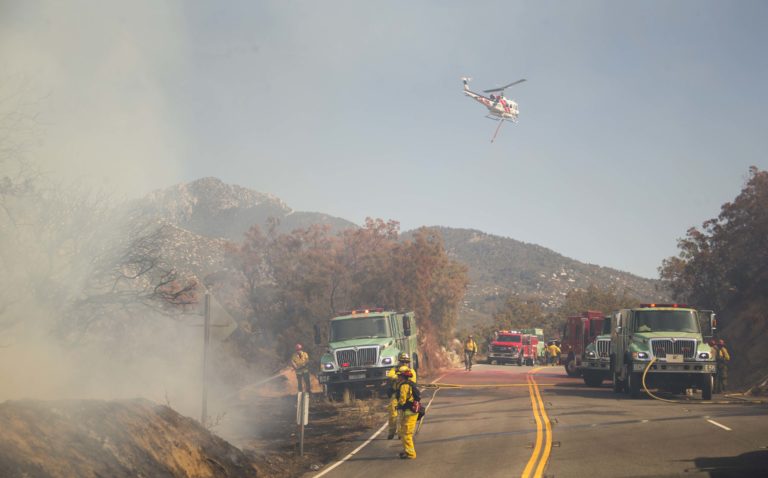By JP Crumrine
Correspondent
In 1959, fentanyl was created as an anesthesia for use in operating rooms and later as a painkiller. However, it is entirely synthetic and evolved into an addictive drug, becoming the leading cause of death in the United States.
Fentanyl is an opioid and for medicinal use is classified as a Schedule II drug. So there is a limit on the number of prescriptions that can be issued to an individual or that a pharmacy can fill for an individual.
However, fentanyl can easily be manufactured illegally and has been for decades. The California Assembly Report on Assembly Bill 33 states, “It is approximately 50 times stronger than heroin and 100 times stronger than morphine … Most recently, cases of fentanyl-related overdoses are linked to illicitly manufactured fentanyl that is distributed through illegal drug markets for its heroin-like effect. It is often added to other drugs because of its extreme potency, which makes drugs cheaper, more powerful, more addictive, and more dangerous.”
Young people are particularly susceptible to fentanyl because of its lethality at such small amounts. They often believe they are taking a Xanax or Percocet pill, but it is laced with fentanyl.
Whether it’s a national entity, such as the Centers for Disease Control (CDC), or a local official such as Riverside County District Attorney (DA) Mike Hestrin, they are warning and alerting people about the dangers and tragedy of using illegal fentanyl.
Nationally, the number of deaths caused by fentanyl directly or combined with other opioids in 2021 was 22 greater times the deaths for the same reason in 2012. In just one year, from 2020 to 2021, the number of deaths increased by 22%.
And California has not avoided this accelerating epidemic. From December 2015 to December 2022, the number of fentanyl-related deaths more than doubled. It grew nearly 160% in seven years from 4,555 in 2015 to 11,761 related deaths in 2022. In May, the CDC reported that fentanyl-related overdoses were already at 11,600.
The DA’s website reports 434 deaths in Riverside County since 2016.
What can be done to quell the growth and then reduce the tragedy of fentanyl? No immediate, effective solution is known. Greater enforcement of illegal drug use and manufacturing is only one limited step. But citizens have to learn of the danger and understand how easily it is to succumb.
In September, the state Assembly and Senate both passed bills to establish a Fentanyl Misuse and Overdose Prevention Task Force and Gov. Gavin Newsom signed Assembly Bill 33 and Senate Bill (SB) 19 into law days later.
The task force is directed to evaluate models for intervening in and reversing the trend of growing fentanyl use and deaths. One example of possible steps includes SB 46, which was passed and signed last month.
Introduced by Riverside County state Sen. Richard Roth, the bill passed both houses unanimously and Hestrin enthusiastically supported it.
This new law requires individuals convicted of a controlled substance offense to complete a treatment or education program. Current law did not require treatment or education. It was dependent on availability as well as the court’s assessment of whether “… the person is likely to benefit from the service.” It also requires juvenile courts to order minors convicted of possession of a controlled substance to attend and successfully complete these courses.
SB 46 also addresses the content of the required treatment education classes. They must be based on the best available current science and evidence and provide educational resources on the pathology of addiction and existing treatment modalities.
The Task Force also is directed to measure and assess the state’s overall progress in mitigating this crisis. This includes assessing means to increase public awareness of the issue and evaluating existing law and possibly recommending new legislation.
California’s attorney general and public health officer will chair the task force. Members of the task force will include other state public health and social services officials, an Assembly and Senate member, many local officials representing county district attorneys, public defenders, law enforcement, health and behavioral health professionals and various private groups such as hospitals, homeless support and youth services, and some who has recovered from fentanyl use.
The task force is directed to meet no later than June 1, 2024, submit an interim report by July 1, 2025 and its final report by Dec. 1, 2025.
Fentanyl is a crisis. Many sources, such as The New York Times, have noted that in 2021, fentanyl-related deaths exceeded 75,000 people. More deaths than guns — including suicide — or automobiles have caused. Republican presidential candidate Nikki Haley has noted, “We have had more fentanyl that have killed Americans than the Iraq, Vietnam and Afghanistan wars combined.” About 65,000 Americans died in these three engagements. Fentanyl kills more in one year.
In Riverside County, the DA’s office is now using murder charges to prosecute a death related to the use of fentanyl. In August, the trial of a Temecula man for giving a female fentanyl resulted in the jury’s one-day deliberation and returning with a guilty verdict of second-degree murder.






